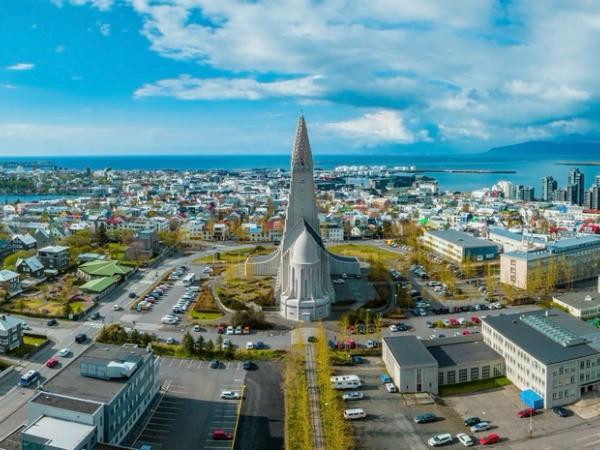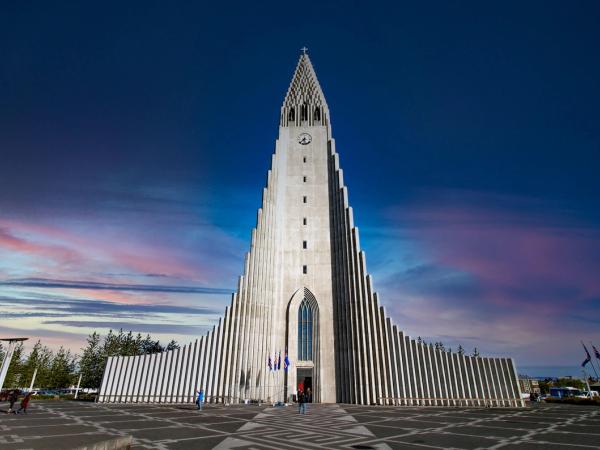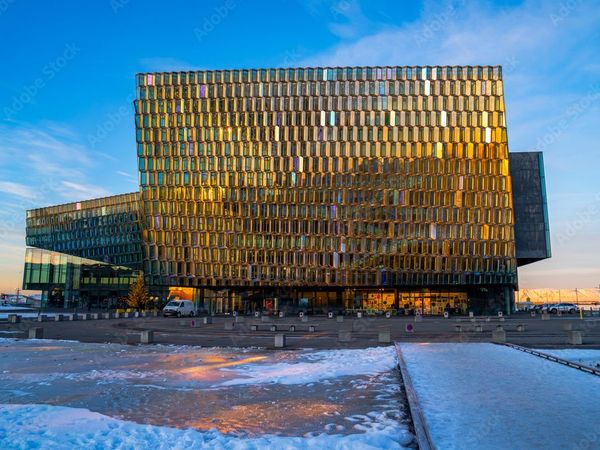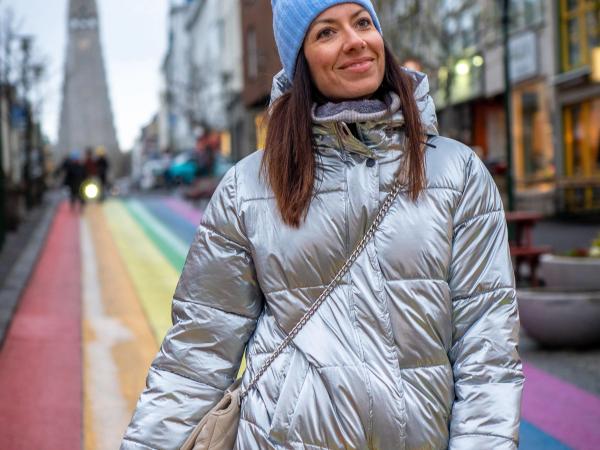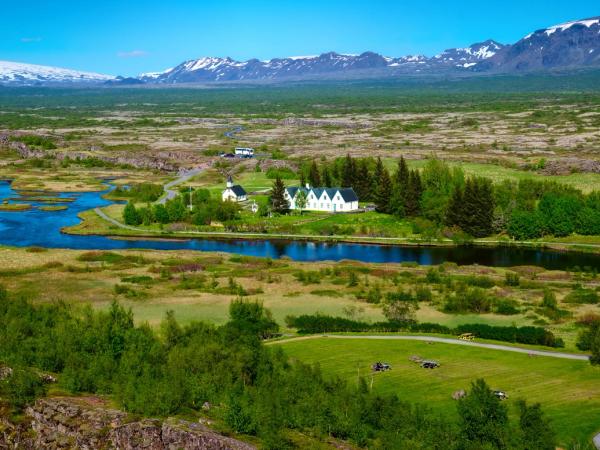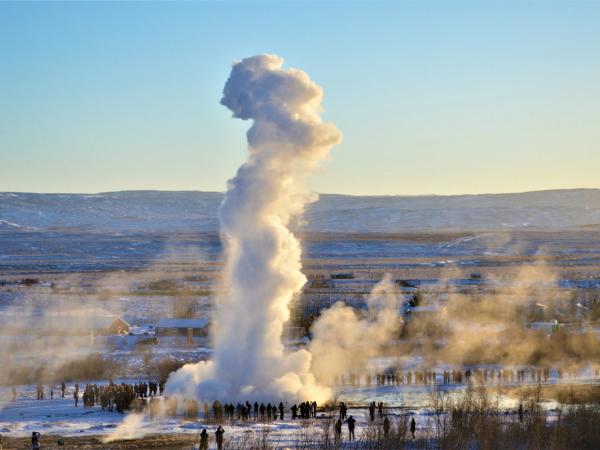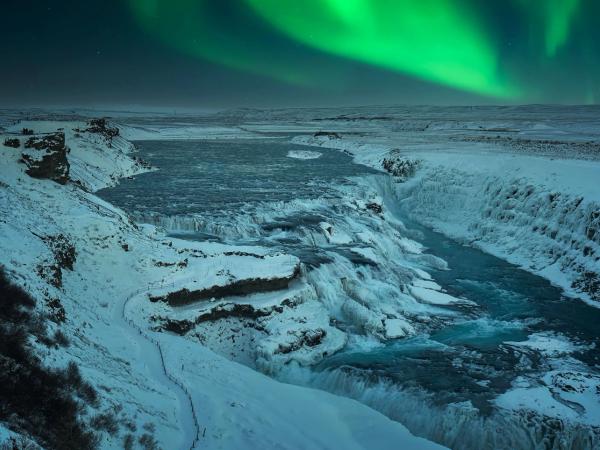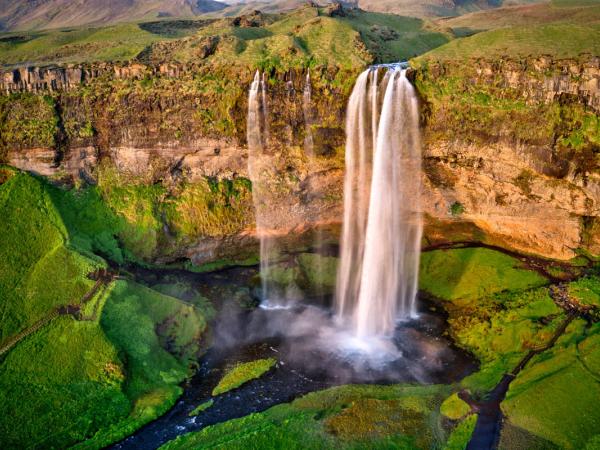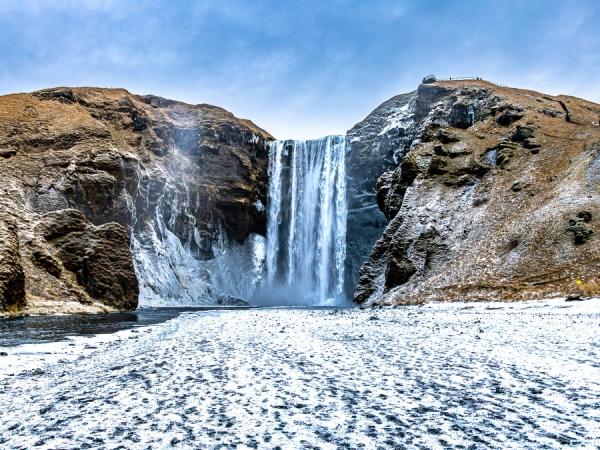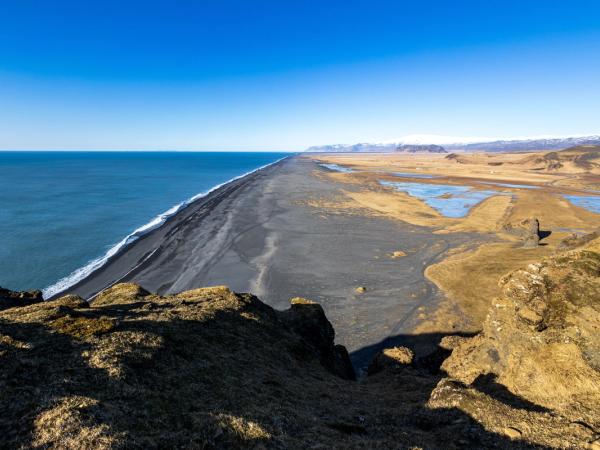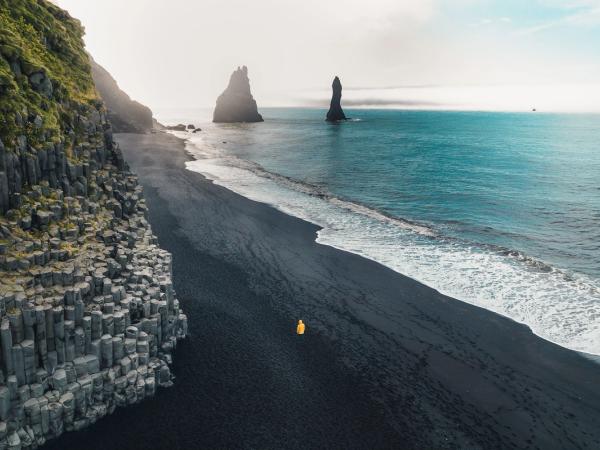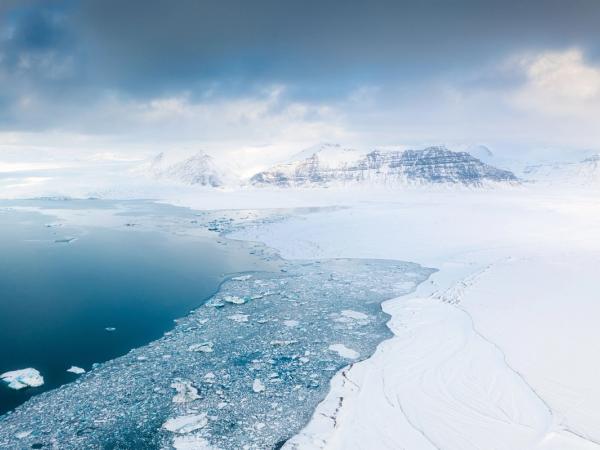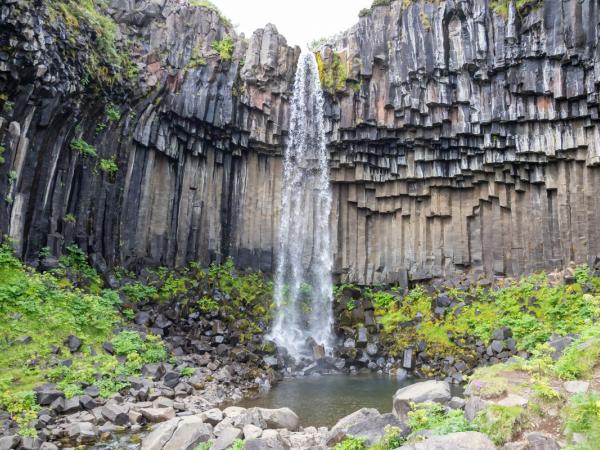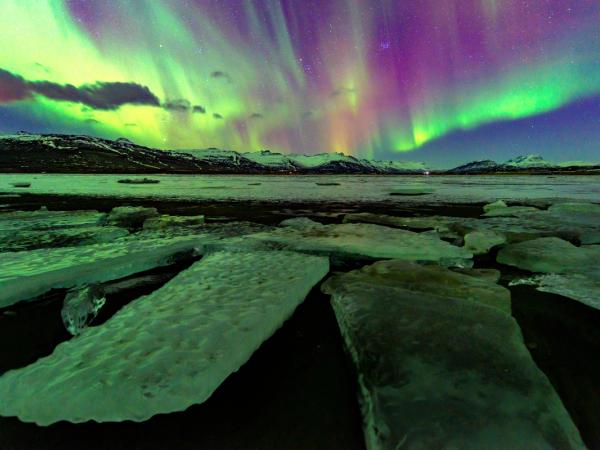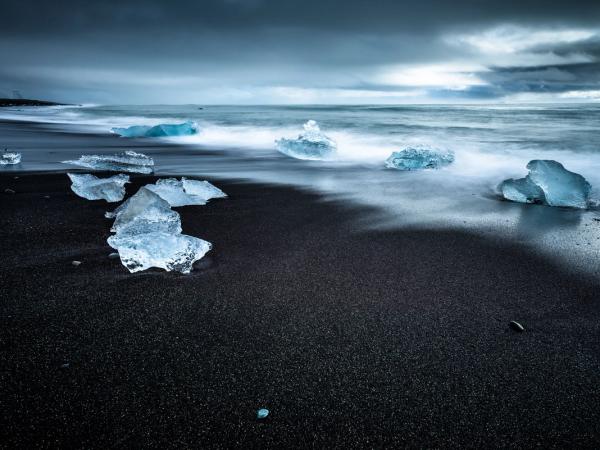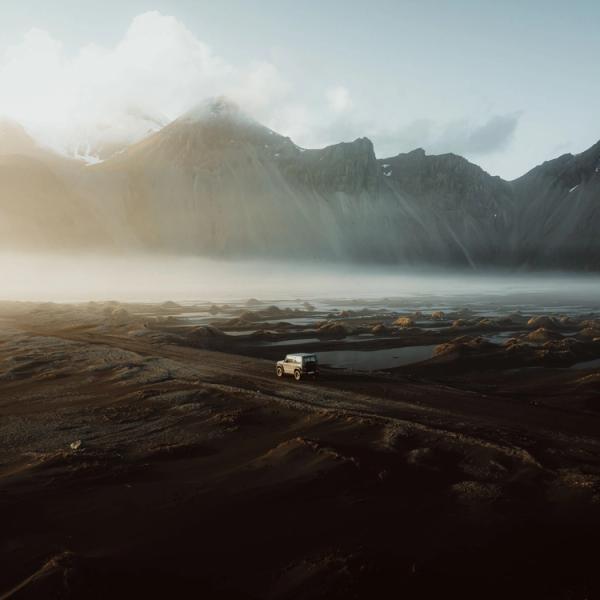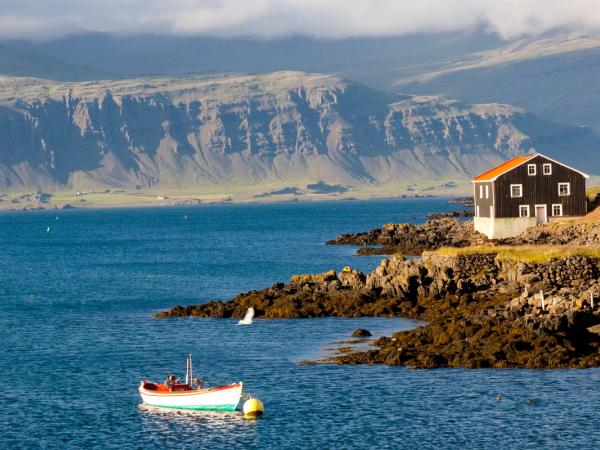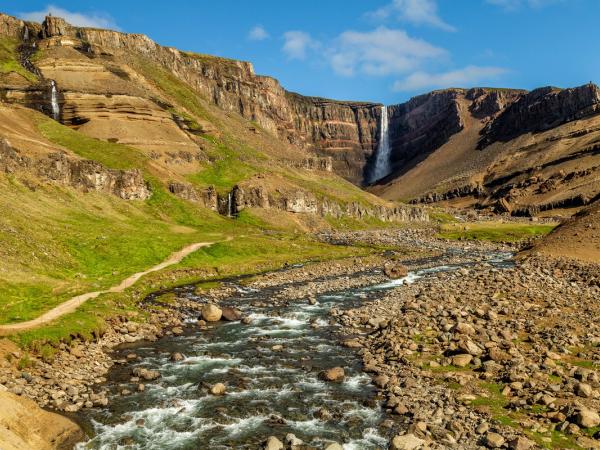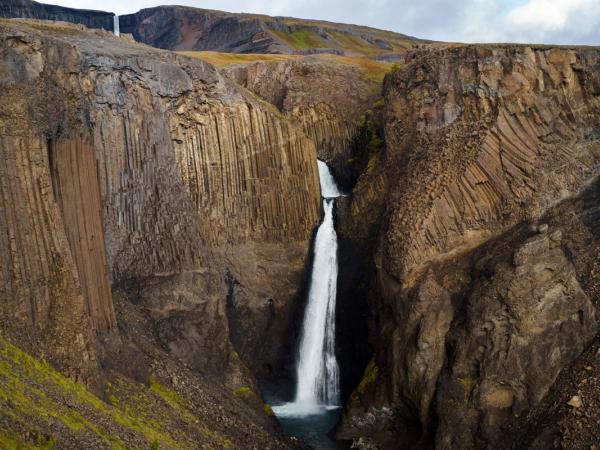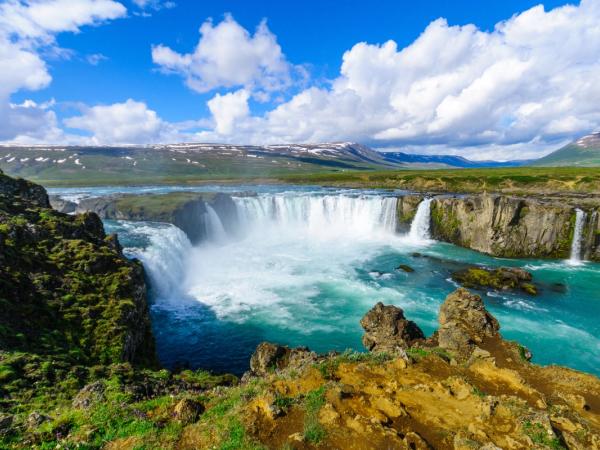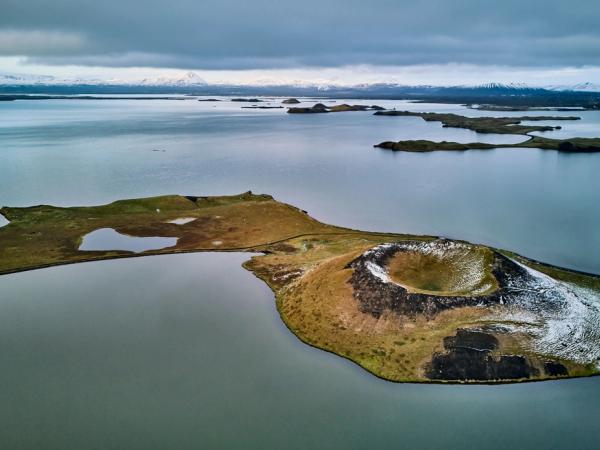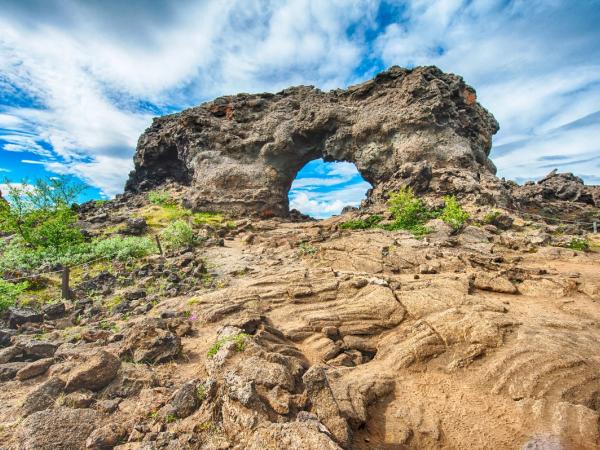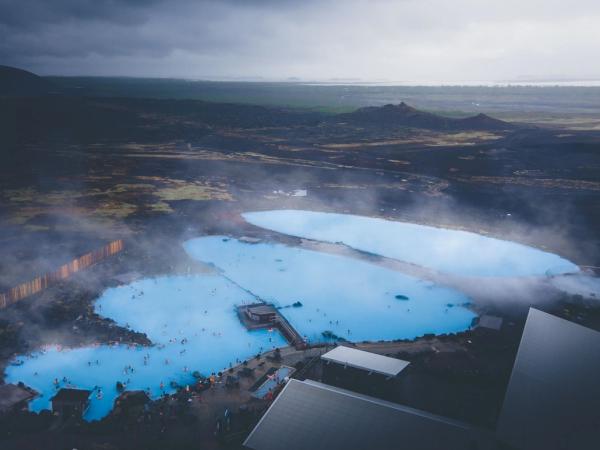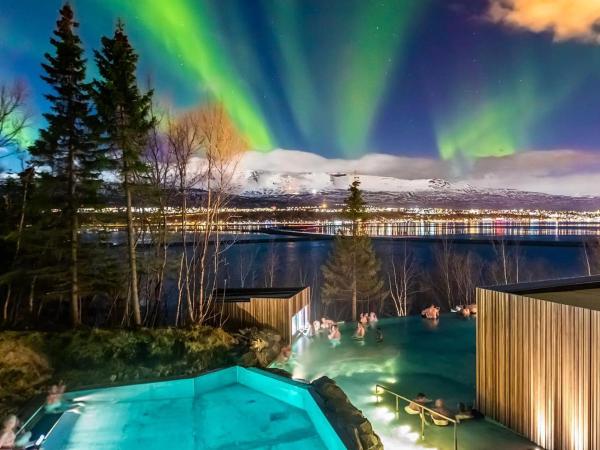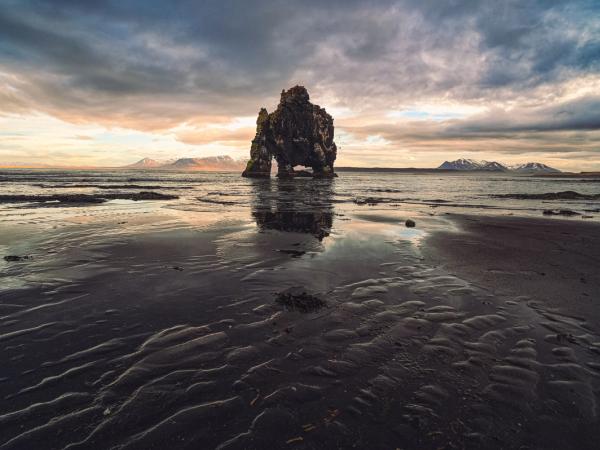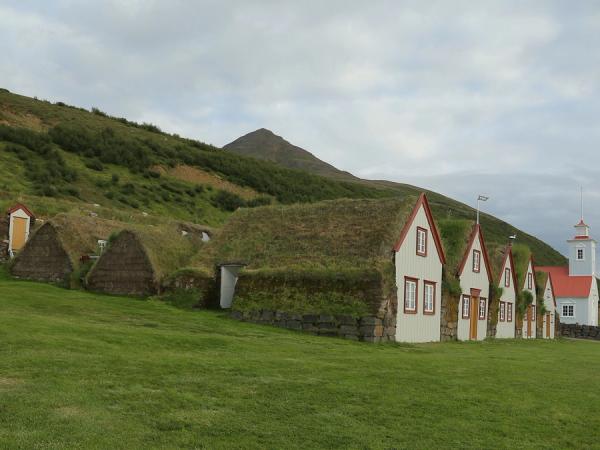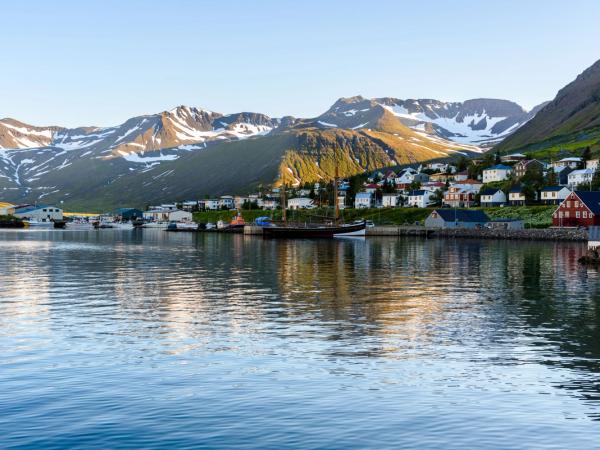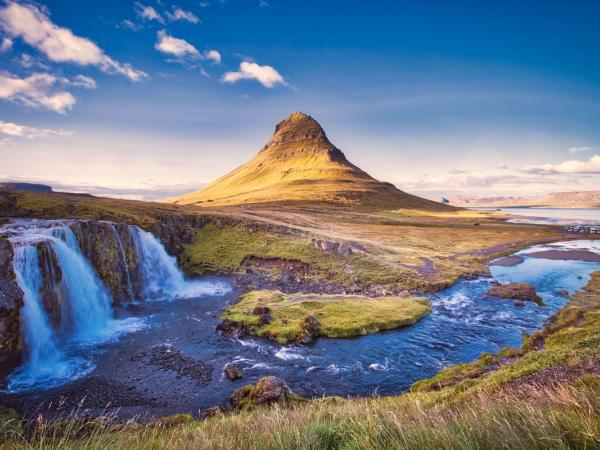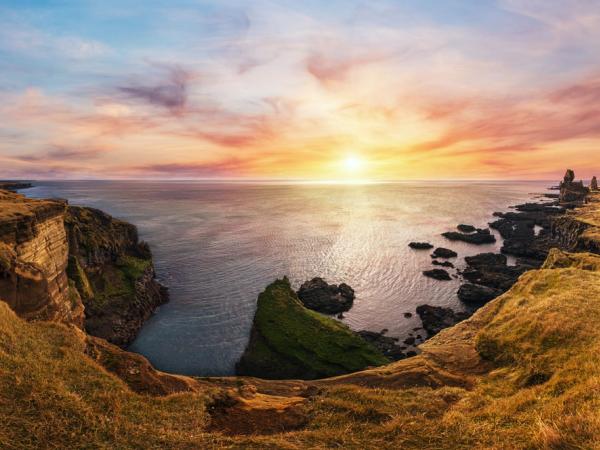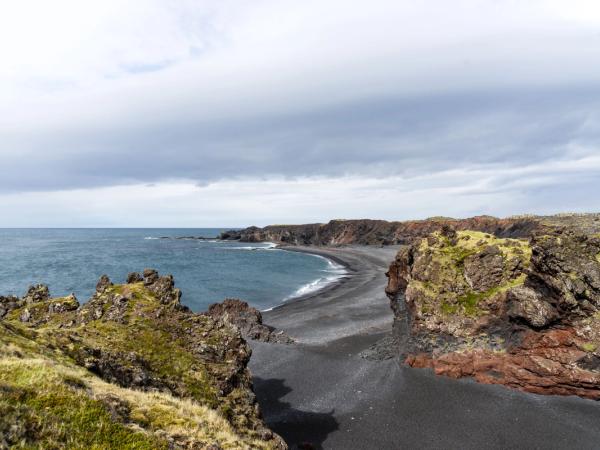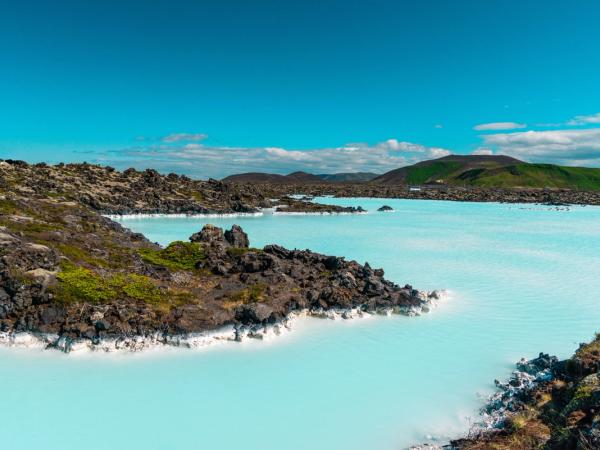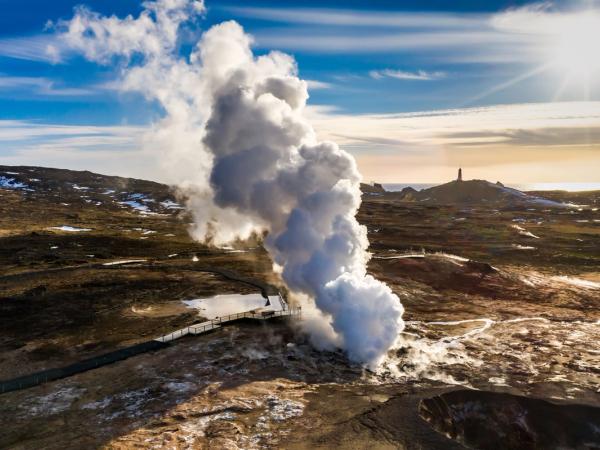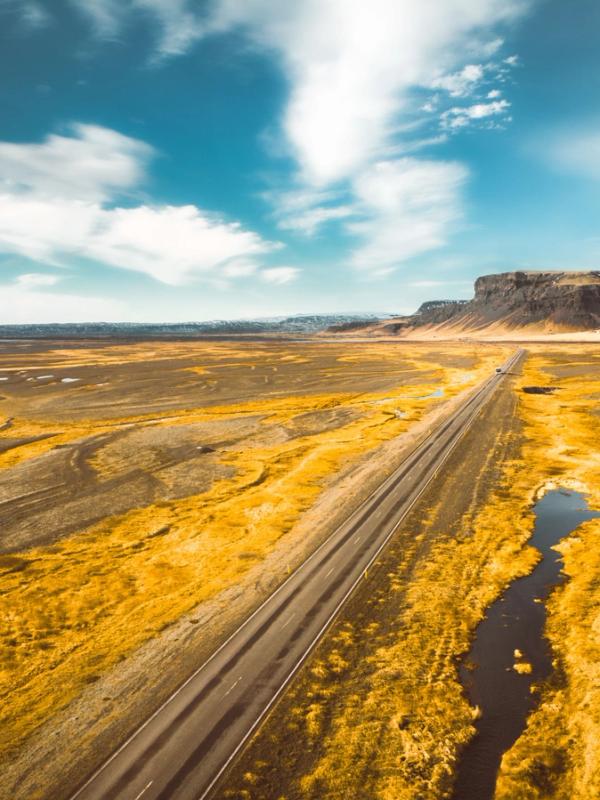
Ring Road Itinerary: A 10-day adventure in Iceland
Nowadays, road trips have become a very common way of traveling. They are a fun way to discover places that have many things that you to see, but they are far from one another. Also, with the right company, they can become great experiences that will be remembered for the rest of your life.
This is especially relevant in the case of Iceland. This country has so many things to offer all over the island that embarking on a road trip seems the perfect way to get to all these places. And not only that, because there’s a road in Iceland that is perfect for a trip like this. The Ring Road, officially named Route 1, is the main highway in the country. It encircles the whole island, going through or close to many of the astonishing natural wonders there are in this country.
It’s also a fantastic way to get in touch with Icelandic culture, because the Ring Road passes by most of the main cities in Iceland. Route 1 is a 1,332-kilometer loop (828 miles) that offers a taste of what Iceland offers. It would take approximately 17 hours to complete without stops, but in this guide, we propose a 10-day itinerary around this iconic road, giving plenty of time to explore each region properly. Get ready to discover waterfalls, glaciers, geothermal wonders, black sand beaches, and fjords. Let’s hit the road!
Key takeaways
- This itinerary starts and finishes in Reykjavik, with a last day to go to Keflavík International Airport.
- Each stop includes many things to see, but some can be left out if you want to spend more time in each attraction.
- Some stops are just by the road, but some others mean that you have to take a slight detour.
Day 1: Reykjavik
Your adventure begins in Reykjavik, Iceland’s capital. It may be relatively small compared to other European capitals, but Reykjavik is full of charm and a vibrant mix of art, culture, and history. It’s a perfect place to get a first glimpse of the Icelandic way of life while taking in some sights of this unique country.
Start by visiting Hallgrímskirkja, the biggest church in Iceland and one of its most iconic buildings. The striking design, inspired by Icelandic nature, is just as impressive inside. Don’t miss the opportunity to take the elevator to the top of the tower, where you’ll be rewarded with panoramic views of the city, the surrounding mountains, and the Atlantic Ocean.
Reykjavik’s waterfront is a very nice place for a stroll, and here you’ll find the Sun Voyager, a beautiful sculpture that symbolizes Iceland’s spirit for adventure. From there, walk to Harpa Concert Hall, a modern architectural masterpiece made of colored glass panels. The reflections from the harbor make it a fantastic spot for photography.
In the afternoon, head to Laugavegur Street, the main shopping area. The street has many boutique stores, shops, restaurants, and cafes. If you’re interested in Iceland’s history and culture, pay a visit to the National Museum of Iceland, where exhibits tell stories about Iceland’s developments from the first Viking settlers to modern times.
For dinner, Reykjavik has an impressive food scene. You can have your first go at the local cuisine, with lamb and seafood being two of the main products. If you feel adventurous, you can even try the hákarl, which is basically fermented shark.
Day 2: The Golden Circle
On your second day, leave Reykjavik behind and head to the east to do the Golden Circle, one of Iceland’s most popular tourist routes. This loop, easily accessible from the capital, includes three of Iceland’s most iconic attractions: Þingvellir National Park, Geysir Geothermal Area, and Gullfoss Waterfall.
The first stop is Þingvellir National Park, a UNESCO World Heritage Site. This remarkable place is astonishingly beautiful, but is also very important at historical level. Geologically, it sits in a rift valley between the North American and Eurasian tectonic plates, and you can literally walk between two continents here in the Almannagjá Gorge. You can do the same underwater, swimming in the Silfra Fissure, where you can touch both plates at the same time. The park is also the birthplace of Iceland’s parliament, Alþingi, which was first established here in 930 AD.
Next, make your way to the Geysir Geothermal Area, a place where geothermal activity can be witnessed in a spectacular way. The Great Geysir, which gives name to the area, is mostly dormant, but its neighbor Strokkur erupts every 5 to 10 minutes, shooting boiling water up to 20 meters (65 feet) into the air. The surrounding area is dotted with steaming vents, bubbling mud pools, and mineral deposits, giving you a sense of the intense forces that lie beneath Iceland’s surface.
The final stop of the day is Gullfoss, also known as the “Golden Waterfall.” This massive two-tiered cascade falls with incredible power into a deep canyon. On sunny days, the mist gets a multicolor effect, hence the nickname of this place. Take your time walking along the trails to fully appreciate its size and beauty.
Day 3: South Iceland
South Iceland is a region of extraordinary beauty, filled with dramatic waterfalls, black sand beaches, and rugged cliffs. Start your day at Seljalandsfoss, one of Iceland’s most famous waterfalls. This 60-meter (196 feet) cascade is unique because you can walk behind it, offering a unique perspective as the water falls down in front of you.
A short drive away is Skógafoss, another stunning waterfall that’s very similar in height to Seljalandsfoss. Climb the staircase to the top of the falls, where you’ll find astonishing views of the surrounding landscape.
Continue along the coast to Dyrhólaey, a dramatic promontory from where you can see a long stretch of coastline. If you visit during the summer months, this area is also a nesting site for puffins, and you might spot them on the cliffs.
Finally, visit Reynisfjara, a black sand beach known for its impressive basalt columns and the Reynisdrangar sea stacks. The contrast between the black sand, the crashing waves, and the surrounding cliffs makes it a great spot for photography. However, be careful with the powerful waves, known as “sneaker waves,” which can be very dangerous.
Day 4: Vatnajökull National Park and Jökulsárlón Glacier Lagoon
The itinerary goes on in the south, moving further east. On the fourth day, go to Vatnajökull National Park, home to Europe’s largest glacier. This park is huge, covering 14% of Iceland’s landmass, and has some spectacular features.
One of the highlights is Skaftafell, a part of the park known for its accessible glacier tongues and hiking trails. You can take a hike to Svartifoss, a waterfall framed by dark basalt columns that resemble organ pipes. It was the inspiration for the design of Hallgrímskirkja.
Next, drive to Jökulsárlón Glacier Lagoon, one of Iceland’s most popular sights. This glacial lake is filled with icebergs that have broken off from a nearby glacier. The chunks of ice, ranging from bright white to deep blue, float in the water, creating a scene of surreal beauty. Many of them end up in the nearby Diamond Beach, where the icy bits spark like gems on the black sand. For an unforgettable experience, a good idea could be taking a boat tour on the lagoon.
Day 5: The Eastfjords
The Eastfjords are one of Iceland’s quieter regions. Not many tourists come to this area, skipping some amazing landscapes. It’s a peaceful retreat away from the busier areas, so it’s the perfect mid-journey place. The drive through this part of the country is characterized by winding roads, steep cliffs, and picturesque fishing villages.
One of the highlights is Djúpivogur, a charming village known for its slow-paced lifestyle and artistic life. Stroll along the harbor and admire the outdoor sculptures, including the famous "Eggin í Gleðivík," a series of egg-shaped statues representing the local bird species.
Another must-see is Hengifoss, one of Iceland’s tallest waterfalls. The hike up also takes you past Lítlanesfoss, another beautiful waterfall surrounded by cool basalt columns.
The Eastfjords are also an excellent place to spot wildlife. Keep an eye out for reindeer, which are commonly seen in this region, and enjoy the beauty of the fjords and mountains.
Day 6: The Diamond Circle – Part 1
As you move into North Iceland, the Diamond Circle offers a series of incredible natural wonders. It’s similar to the Golden Circle in the south, but connecting five major stops. As the drive up here is longer and the region is quite vast, we have divided this stop into two days, so you have enough time to see everything properly.
Start at Dettifoss, Europe’s second most powerful waterfall. The sheer volume of water cascading over the edge is impressive and humbling.
Next, visit Ásbyrgi, a horseshoe-shaped canyon with a beautiful forest at the bottom and tall cliffs. Legend has it that the canyon was formed by the hoofprint of Odin’s eight-legged horse, Sleipnir.
End the day in Húsavík, a charming town on the coast known as the whale-watching capital of Iceland. Take a boat tour to see humpback whales, minke whales, and orcas. The experience of seeing these majestic creatures in their natural habitat is unforgettable.
Day 7: The Diamond Circle – Part 2
North Iceland is a big region and the attractions of the Diamond Circle are worth your time. After spending the night in the area, start your second day at Goðafoss, the "Waterfall of the Gods." This semi-circular waterfall is both visually stunning and historically significant. According to legend, Iceland’s chieftain Þorgeir Ljósvetningagoði threw pagan idols into the falls in 1000 AD when the nation adopted Christianity. However, the most striking feature about this place is the intense turquoise color of the water.
From Goðafoss, drive to Lake Mývatn, a geothermal area surrounded by striking volcanic landscapes. Spend time exploring Dimmuborgir, which means "Dark Castles," where the strange lava formations resemble fortresses of twisted rock. If you’re looking to relax in the area, head to the Mývatn Nature Baths. The warm, mineral-rich waters are perfect for soaking your body while enjoying views of the volcanic landscape around.
Another option for a bath is the Forest Lagoon, a gorgeous man-made geothermal spa. It’s located in the middle of a nice forest, with views over the Eyjafjörður fjord. Wrap up the day in Akureyri, Iceland’s second-largest city. It has a vibrant cultural life, with nice cafes and restaurants where you can enjoy Icelandic food. If you have enough time, go to the Akureyri Botanical Gardens and the Akureyri Church.
Day 8: North Iceland’s Hidden Gems
North Iceland has much more to offer than the already amazing Diamond Circle. This region offers plenty of hidden treasures that deserve attention. We’re going to move now towards the west, starting at Hvítserkur, a 15-meter-high basalt rock near Vatnsnes Peninsula. This surprising formation is shaped like a dragon that is drinking water from the sea. Some people claim that what they see is an elephant, while the local folklore says it’s a petrified troll caught by the sun. This place looks at its best at low tide, allowing you to walk around the base. It’s also a nesting place for many species of seabirds.
From here, continue to Laufás Turf House, a place where history comes to life. Here you can see how Icelandic rural life used to look like. Here you can witness traditional turf architecture, with thick grass-covered roofs designed to isolated houses from the harsh Icelandic weather. Inside, you’ll find period furnishings and displays that highlight how Icelanders lived centuries ago.
Next, head to Siglufjörður, a charming fishing village surrounded by astonishing mountains and the Arctic Ocean. Siglufjörður was once the hub of Iceland’s herring industry, and the Herring Era Museum tells the story of the golden age of this town. It has interactive exhibits, restored fishing boats, and here you can even taste traditional herring dishes. Take a walk through the colorful streets, visit the harbor, and enjoy the quiet charm of this northern gem.
Day 9: Snæfellsnes Peninsula
The next stop is Snæfellsnes Peninsula, in west Iceland. This area has been nicknamed “Iceland in miniature,” because it has a bit of everything that has made Iceland famous worldwide. All packed in a relatively small area. Most of this peninsula is part of Snæfellsjökull National Park, where the glacier-capped volcano of the same name is the main character. This mountain is impressive, and also a place of literary fame, as it was the inspiration for Jules Verne to write Journey to the Center of the Earth.
Here you can find Kirkjufell, a striking mountain that is said to be the most photographed mountain in the whole country. It looks at its best alongside a nearby waterfall, Kirkjufellsfoss. The unique cone shape of Kirkjufell has made it one of Iceland’s most recognizable natural landmarks.
If you want to explore Iceland’s underground world, it's a good idea to join a guided tour to hike the glacier or explore one of the park’s lava caves, such as Vatnshellir.
The coastal villages of Arnarstapi and Hellnar are great examples of the region’s fishing villages, with dramatic cliffs, natural rock formations, and rich birdlife. There’s a walking trail that connects the two. It has amazing views of the coastline and there are chances to spot puffins during the summer months.
Don’t miss Lóndrangar, two towering basalt cliffs rising from the sea. There are remains of a volcanic crater that has been eroded by the action of the waves. You can also go to Djúpalónssandur, a black sand beach scattered with the remains of a shipwreck.
You can spend the night in the area or head to Reykjavik. There you can enjoy the city’s nightlife or take time to see some things you didn’t have time to in your first day. It all depends on the departure time of your flight.
Day 10: Departure – Reykjavik to Keflavik with a Blue Lagoon Stop
On your final day in Iceland, make the most of your drive from Reykjavik to Keflavik Airport. You can take the opportunity to say goodbye to the country in the best possible way. Start your morning with a nice breakfast in Reykjavik before heading out.
Then, make your way to the Blue Lagoon, one of Iceland’s most famous geothermal spas. Situated in a lava field, the Blue Lagoon is renowned for its milky blue waters rich in silica, which is said to be beneficial for the skin.
If you haven’t yet explored the Reykjanes Peninsula, and you have time, consider stopping by the Reykjanes Geopark. The Bridge Between Continents, a symbolic structure spanning the Eurasian and North American tectonic plates, is an excellent photo opportunity and a unique reminder of Iceland’s geological importance.
Alternatively, visit the Viking World Museum, where you can explore a full-scale replica of a Viking ship and learn more about Iceland’s history.
Travel Tips
Here you have some essential tips to make the journey smooth and enjoyable:
- Pack Smart: As the weather in Iceland changes so much, the key to adapt to it is layering. This way you can add or remove items to adjust to the changes. Don’t forget to bring a waterproof and windproof jacket.
- Stay informed: The weather can change a lot and is unpredictable, as it can have a huge impact on the roads. Always check the weather forecast and the road conditions before starting your day.
- Navigation and Driving: Use GPS or offline maps, as cell signal can be weak in some remote areas. Drive cautiously, especially in winter. Roads can be icy and narrow.
- Food and Water: Pack snacks for long stretches between towns. Bring a reusable water bottle, Iceland’s tap water is pure and free and you’ll reduce the use of plastics.
- Accommodation: Book in advance, especially during peak travel months (June to September). This also applies to activities you want to do.
- Fuel Stops: Gas stations can be sparse in remote areas, so fill up whenever possible.
- Safety and Emergencies: The number for emergencies in Iceland is 112. Always have a charged phone and portable power bank.
- Respect Nature: Stick to marked trails to protect the fragile ecosystems. Never drive off-road, it’s illegal and damaging to the environment.
Conclusion
Driving Iceland’s Ring Road is more than a trip—it’s a journey through some of the most extraordinary landscapes on Earth. Over ten days, you’ll witness the raw power of nature, from astonishing waterfalls to unique glacial lagoons, and experience the magic of Iceland. It’s not only a way of travelling around the country, it’s an immersive experience that will bring you closer to Iceland’s essence. This adventure will leave you with memories that last a lifetime.

